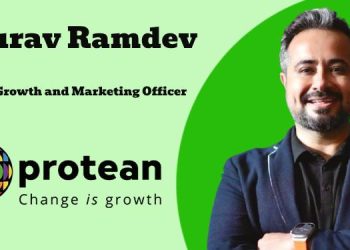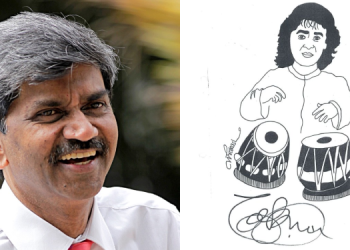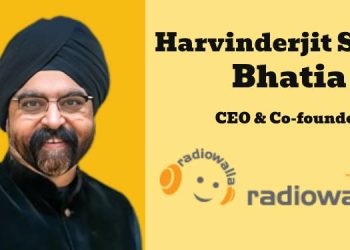Mumbai: While subscription based business and finance news platforms are growing they have to keep some things in mind. One is that they have to think of younger audiences and adapt their strategy if they want to survive and thrive. One way is to create an app with easy-to-read stories. Also, people come expecting value. Unlike general news, they don’t come because something fancy has caught their eye.
For a subscription based news platforms, a growth area is tier two and three towns and cities. A new class of investors are coming in. At the same time, fake news can be detrimental in the business and financial news category. These were some points that were made at a session during Ficci Frames 2024 which is the convention for the business of media and entertainment.
The session was called ‘Global News in the Age of Social Media: Opportunities and Challenges’. The moderator was. Raman Kalra, VP & Senior Partner, Communications Sector Lead & Sustainability Consulting Lead, IBM. The panellists were Sabrina Daryanani, Head of APAC & Principal, FT Strategies Deepit Purkayastha, Co-Founder and Chief Strategy Officer, Inshorts, Nalin Mehta, Managing Editor, Moneycontrol and Vishal Pant, Executive Editor, India Today.
Mehta noted that the downward movement in the quality of news in the business and finance category has been much less compared with general news. In business news, if you don’t get it right then people do not come back. Accuracy in business is high because there is fact-checking going. He said that people come to Moneycontrol.com as they think that the platform will make their money. They don’t just come to learn about the economy. In this situation therefore you have to get it really right. 23 minutes is spent per user he said. The subscriber base is 720,000. People he said do not come because something caught their fancy. They come because of data, and insights. Traders visit moneycontrol.com as there is value in real terms.
On social media an interesting trend he noted is that people want to know which stock to buy. His company has certified analysts giving stock recommendations. It is not someone giving an opinion. Reporters can only report on a company. They cannot make a call on what to do with a company. That is the job of analysts which is a different category. Analysts sign a code of conduct. Their investments are declared to the company. There is a list of dos and don’ts. Another issue is to figure out what should be behind the paywall. The company prioritises long-term value over short-term gain. He also noted that for a large part of a day, the audience is behind a PC in an office. The nature of the audience is different from the audience of say Times Of India. He also noted that audience engagement on Whatsapp is phenomenal for every update.“That is where the audiences are.”
For him the opportunity for expansion lies in tier two and three towns and cities in Hindi. It is also available in Gujarati. “This is in line with the larger growth in the market because a new class of investors are coming in.” Purkayastha explains that Inshorts is a value added services. If it did not exist then there would be a class of consumers who would not read news at all. That is because the trust level isn’t high in incumbent brands. Those people would just watch TV. The issue of regulation was touched on but striking down happens generally in copyright cases or if something is very explicit. But abusive, sensational content goes unpunished often. Even primetime news channels do the same sensational news and this is a problem in general with news not just for online news. This has to do with monetisation and eyeballs need to come in. At the end of the day as long as content is not factually incorrect there is not wrong with some amount of titillation.
Daryanani said that everyone thinks about who the audience is and how they should be served. FT has been thinking about reaching audiences and changing its products to reach audiences who want something quick and easy. So it is created an app that serves up eight stories a day which are quick and easy to read. There is a whole editorial team for this app. “You cannot survive without this audience. We are in a big fight but you have to think about new readers, new audiences and how to change your products. People want something quick, easy, short. There is a short attention span.” she warns. You have to think about what your audience wants and how a product is adapted it is about sustainability. WSJ’s average reader age is 73 years old. Then what happens 10 years from now. How do you reach audiences who get news not just from public but private social media like Whatsapp where there is no real verification of who is sending news.
She said that 65 per cent of FT’s revenue is B2B. It is people in other organisations wanting accurate news. At the session it was pointed out that the challenge of fake news in finance is massive. Recently unverified news sent a share price to the upper circuit. By the time the fact check happened some people made money and others lost. Citizen journalism does bring an opportunity for a different perspective. But it is a risk due to fact checking and seeing if the news is verified. X has become a newsroom for all practical purposes.
Purkayastha said that Inshorts has two platforms – Inshorts and Public. Inshorts has traditional brands and publisher partners. But on Public, there are original content creators. The solution has two layers. First is that freedom of speech and expression does not extend to bots. So creators are verified through their phone number and their press card has been submitted. Fact check is not done. People check is done. People are held accountable. The company is available in other countries as well. The biggest problem he said with X is that you do not know who is behind the accounts. You do not know who is running them. You could have surveys running AI bots in a market like Malaysia, the Philippines.
The session pointed out that in general news people use UGC. It is a way to increase readership. You have citizen journalism both on TV and in digital. But in business news, this is not the right way to do it. That is because in business news you talk about verified information about a company or the economy or the market. Some finfluencers have opinions and some are very good. But there is a difference between that and a legitimate business news organisation.
When asked about revenue Daryanani said that besides advertising for online business news has changed to branded content partnerships. Things have changed and evolved on the revenue front. News companies like The Economist also invest in events and in research. The Economist Intelligence Unit had to think about diversifying. There is all this knowledge and insights. What does one do with the content? She noted that in Southeast Asia there is hesitation in general by news to go towards reader revenue and subscription. She said that 2019 was pivotal as FT hit one million paid subscribers.

















